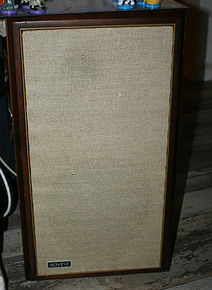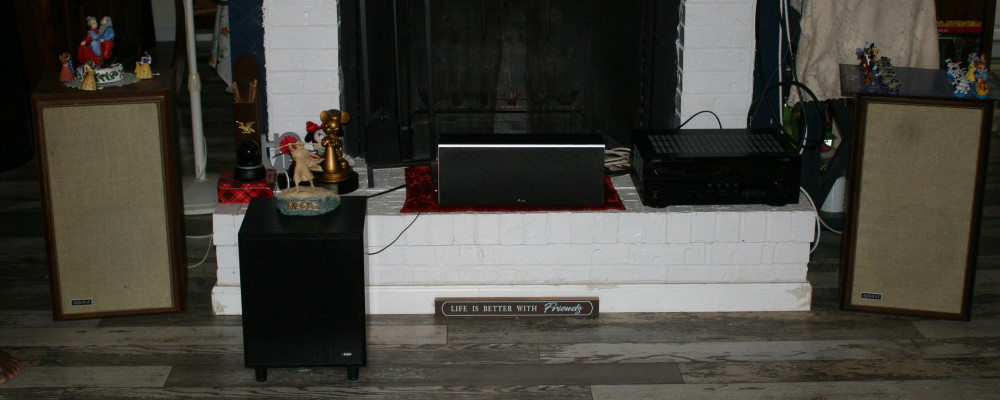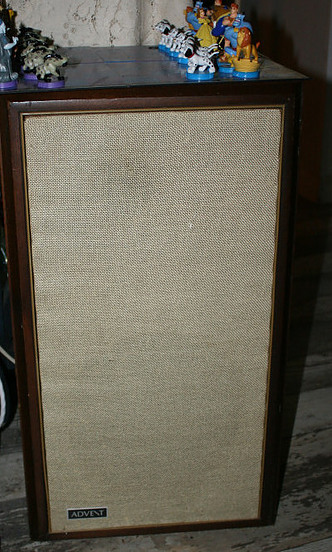Introduction to Advent Loudspeakers
Advent Loudspeakers is a renowned brand in the audio industry, known for producing high-quality speakers that deliver exceptional sound performance. The company was founded in 1967 by Henry E. Kloss, who was a pioneer in loudspeaker design and technology. Kloss had previously co-founded other successful audio companies such as Acoustic Research and KLH, and he brought his expertise and innovation to Advent.
Large Advent Speakers Specs
The Large Advent is a two-way direct-radiator loudspeaker. The Crossover frequency is 1kHz. Balance control. The tweeter switch on the back selects flat, +3dB, or –3dB. The Impedance of the Advent is 8 ohms and the power capacity is 100W. The price of new Advent speakers was $116 each in walnut veneer and $102 each unfinished (1971); no longer available (2006). Made by the Advent Corporation, Cambridge, MA (1971). Company no longer in existence (2006).
Large Advent Loudspeakers quickly gained a reputation for their innovative designs and superior sound quality. The brand became popular among audiophiles and music enthusiasts who appreciated the clarity, detail, and depth of sound that Advent speakers provided. Over the years, Advent expanded its product line to include bookshelf speakers and floor-standing speakers. Early reviews of the Large Advent, then known just as the Advent Speaker until the production of the small Advent, stated that: “The Advent speaker added nothing to the rccorded sound nor took anything away from it”, “Isn’t that exactly what a speaker should be designed to do”.
Understanding Speaker Specifications
When shopping for speakers, it is important to understand the various specifications that are listed for each model. These specifications provide valuable information about the performance and capabilities of the speakers, helping you make an informed decision. By understanding these specifications, you can choose speakers that are best suited to your needs and preferences.
Some common speaker specifications include frequency response, impedance, sensitivity, power handling, speaker size and configuration, cabinet design and material, tweeter and woofer technology, and bi-wiring and bi-amping capabilities. Each of these specifications plays a role in determining the sound quality and performance of the speakers.
Frequency Response and Impedance
Frequency response refers to the range of frequencies that a speaker can reproduce accurately. It is typically measured in Hertz (Hz) and is represented by a range such as 20Hz-20kHz. The wider the frequency response range, the better the speaker is at reproducing a wide range of frequencies. A speaker with a wider frequency response range will be able to reproduce low bass notes as well as high treble notes with clarity and accuracy.
Impedance, on the other hand, refers to the electrical resistance that the speaker presents to the amplifier. It is measured in Ohms (Ω) and is typically listed as a single value such as 8Ω. The impedance of the speaker should match the output impedance of the amplifier for optimal performance. If the impedance is too low, it can overload the amplifier and cause distortion. If the impedance is too high, it can result in a loss of power and reduced volume.
Sensitivity and Power Handling

Sensitivity is a measure of how efficiently a speaker converts electrical power into sound. It is typically measured in decibels (dB) and is represented by a value such as 88dB. A higher sensitivity rating indicates that the speaker requires less power to produce a given volume level. Speakers with higher sensitivity ratings are ideal for use with low-powered amplifiers, as they can achieve high volume levels without distortion.
Power handling refers to the maximum amount of power that a speaker can handle without being damaged. It is typically listed as a range such as 50W-150W. It is important to match the power handling capabilities of the speaker with the output power of the amplifier to avoid damaging the speakers. Using an amplifier with too much power can cause the speakers to overheat and potentially blow out.
Speaker Size and Configuration
Speaker size and configuration play a significant role in determining the sound quality and placement options of the speakers. The size of the speaker refers to its physical dimensions, such as height, width, and depth. Larger speakers tend to produce deeper bass and have a more powerful sound, while smaller speakers are more compact and easier to place in smaller spaces.
Speaker configuration refers to the number of drivers in the speaker and how they are arranged. Common configurations include two-way, three-way, and four-way speakers. A two-way speaker has a woofer and a tweeter, while a three-way speaker has a woofer, a midrange driver, and a tweeter. A four-way speaker adds an additional driver, such as a super tweeter. The configuration of the speakers affects the frequency response and overall sound quality.
Cabinet Design and Material
The design and material of the speaker cabinet can have a significant impact on the sound quality and durability of the speakers. The cabinet is responsible for housing the drivers and minimizing vibrations and resonances that can distort the sound. A well-designed cabinet will be rigid and well-damped, preventing unwanted vibrations from affecting the sound.
Common cabinet materials include wood, MDF (medium-density fiberboard), and plastic. Wood cabinets are often preferred for their natural acoustic properties and aesthetic appeal. MDF cabinets are more affordable and can provide good sound quality when properly designed. Plastic cabinets are lightweight and durable, making them suitable for portable speakers.
Tweeter and Woofer Technology
The tweeter and woofer are the two main drivers in a speaker, responsible for reproducing the high-frequency and low-frequency sounds, respectively. The technology used in these drivers can greatly impact the sound quality and frequency response of the speakers.
Tweeters are typically made of materials such as silk, fabric, or metal. Silk and fabric tweeters are known for their smooth and detailed sound reproduction, while metal tweeters can provide greater accuracy and extended high-frequency response. The size of the tweeter also affects its performance, with larger tweeters generally producing better dispersion and higher power handling.
Woofer technology has also evolved over the years, with advancements in cone materials and designs. Common cone materials include paper, polypropylene, and aluminum. Paper cones are known for their warm and natural sound, while polypropylene cones offer good durability and bass response. Aluminum cones provide excellent stiffness and rigidity, resulting in accurate and detailed bass reproduction.
Compatibility with Amplifiers and Receivers
When choosing Large Advent Loudspeakers, it is important to ensure that they are compatible with your existing amplifiers and receivers. The impedance of the speakers should match the output impedance of the amplifier to avoid any compatibility issues. It is also important to consider the power handling capabilities of the speakers and ensure that they can handle the output power of the amplifier without being damaged.
Additionally, it is worth considering the sensitivity of the speakers and how it matches with the power output of the amplifier. Speakers with higher sensitivity ratings are more efficient and require less power to achieve a given volume level. This can be beneficial if you have a low-powered amplifier or if you want to achieve high volume levels without distortion.
Actual User Reviews:
Submitted by dalethorn on January 20, 2012 – 7:45pm
“The Advent was my first serious speaker system, inspired by the Stereophile review and embellished by the literature supplied by Mr. Henry Kloss, containing such classic phrases as “Hoffman’s Iron Law” and “The shortest distance between two points is a straight line, or the line that’s the straightest under the circumstances.”
“But the key thing about these speakers wasn’t the absolute neutrality or other such audiophile considerations. It was the deep bass that seemed to rise out of the earth and take over the room, which I had never heard before the Advent. Kloss was a genuine inspiration to me.”
Submitted by funz51 on March 12, 2012 – 10:47am
“I purchased the ‘baby’ advents in the late 70’s before college. I ran them like mules for 4 years as a electrical engineering student. 10 years later, I removed the pink tweeter, which I really thought was too bright anyway, and replaced with a soft dome mid, and a 90’s polk tweeter. Let me tell ya, what an improvement. I have replaced thier surrounds twice in the past years. I now am contiplating selling them, but am afraid I will miss them… ;( Kloss knew his stuff, just like Hsu with his sub’s… terrific!”
These reviews are from Stereophile
Conclusion: Choosing the Large Advent Loudspeaker
When choosing Advent Loudspeakers, there are several key considerations to keep in mind. First, consider your budget and determine how much you are willing to spend on speakers. This will help narrow down your options and ensure that you choose speakers that are within your price range.
Next, consider your listening preferences and the type of music or content you will be listening to. If you enjoy bass-heavy music, you may want to consider speakers with larger woofers or a subwoofer. If you prefer a more balanced sound, speakers with a three-way configuration may be a good choice.
Lastly, consider the size and placement options of the speakers. If you have limited space, bookshelf speakers or smaller floor-standing speakers may be more suitable. If you have a larger room or prefer a more immersive sound experience, larger floor-standing speakers may be a better option.
By considering these factors and understanding the various specifications of Advent Loudspeakers, you can choose the right model that meets your needs and delivers exceptional sound performance. Whether you are a casual listener or an audiophile, Advent Loudspeakers offer a range of options to suit every preference and budget. There are plenty of large Advent speakers for sale on Ebay. Be careful as these are old used speakers and unless you live near the seller for pickup and listening to only buy from a highly rated seller who allows returns if you are unhappy with the purchase or they are not performing to specs.
The pictures in this article are of my own Large Advents that are in use in my own surround sound system with my Yamaha Receiver, a Jenson powered subwoofer a Polk Audio center speaker and a pair of small Polk Audio speakers for the rear surround. I contemplating using my small Advent speakers in the back as soon as I can get around to building shelves to place them on.
Please leave any comments, questions or suggestions below.
